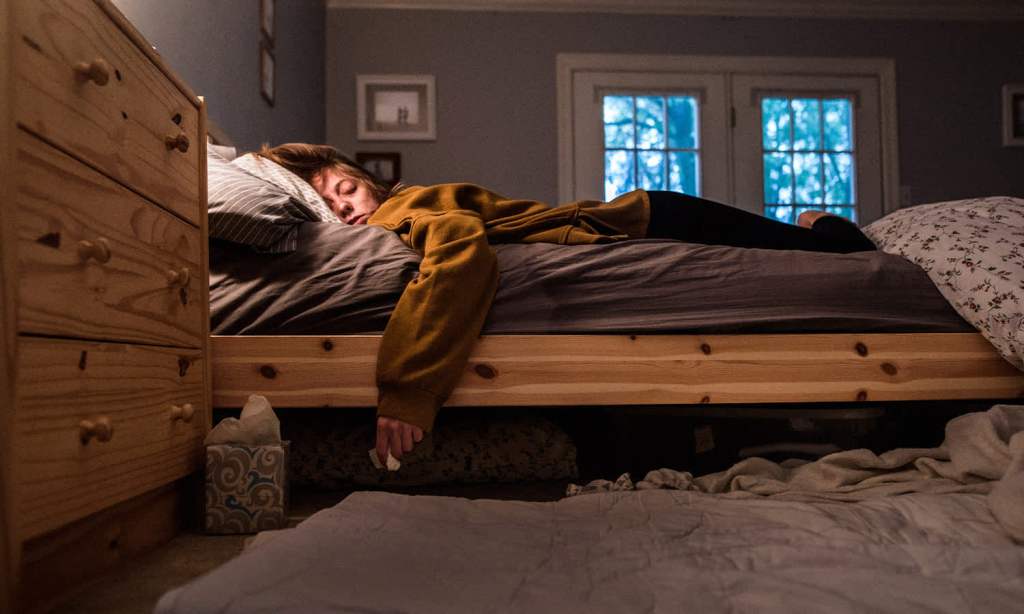Since the start of the pandemic there have been more than one million COVID cases in Australia. Thankfully, daily case numbers appear to be on the decline, at least in New South Wales and Victoria. However, there are currently over 5,000 patients in hospitals across the country and more than 380 in intensive care.
Keeping the pressure off the healthcare system is our number one priority right now when it comes to COVID and, while mild restrictions on socialising appear to be having some effect, there are serious fears that hospitals may have to begin turning people away.
While the blame for these issues lies solely in the hands of government, we can, and indeed must, all do our part. Wearing masks, social distancing, and getting our booster doses are all great steps we can take, but when you’re sick, you’re sick. Sometimes you need to get yourself to a hospital for serious treatment and that’s no bodies fault.
If you’ve got COVID, here’s when you should seek medical support and how to manage it at home.
When to Go to Hospital With COVID
Most COVID infections pass without serious complications, particularly if you’re young, healthy, and, most of all, vaccinated. That’s not always the case though, and tragedies do still occur to people in this demographic so it’s worth being vigilant.
Most COVID symptoms include a fever, fatigue, the loss of taste or smell, and respiratory symptoms like coughing. They can also include the less common headaches, sore throat, mild shortness of breath, aches and pains, a runny nose, chills, intermittent nausea and vomiting as well as diarrhoea.
These can be unpleasant but are not a cause for alarm. If you develop any of the following however, that’s when you need to speak to a medical professional: less than 92% oxygen levels when using a pulse oximeter, serious shortness of breath or difficulty breathing, blue lips or face, pain or pressure in your chest, cold and clammy skin, fainting or collapsing, being very confused, difficulty waking up, going to the bathroom less regularly, coughing up blood.
Any of these mean 000 should be called immediately. Explain that you have been diagnosed with COVID-19 and have severe symptoms.
In addition, babies, young children, and anyone over 60 with suspected pneumonia or a fever, difficulty breathing, or severe chest pain should also go to the emergency department.
When Not to Go and How to Treat COVID at Home
If you don’t develop any of these, the main advice is to rest as much as you can, drink lots of liquids, and take paracetamol or ibuprofen to manage symptoms. HealthDirect has a lot of resources for how to manage COVID at home while The Royal Australian College of General Practitioners also has an extensive guide for the same.
Recent research has found that an increasing number of Australians are visiting emergency departments for less urgent issues, causing a knock-on effect with longer wait times for more serious cases and additional strain on the hospital staff.
Dr Andrew Thompson, medical practitioner at InstaScripts telehealth service, says that many of these issues can and should be treated in other ways.
“Ambulance Victoria recently issued a code red alert as its services grapple with an unprecedented volume of calls, many of which could be tended to by GPs,” Thompson says.
“Using Government-funded service HealthDirect, which offers a dedicated helpline, allows Aussies to speak to a registered nurse to gauge whether they require a hospital visit. The service is available 24/7.
“This could reduce the strain on 000 call operators and ambulance services, allowing them to tend to patients in need of critical care.”
Thompson also recommends putting together a list of alternative medical services, from late-night dental surgeries, to pharmacies, walk-in medical centres and telehealth services.
“Keep the list easily accessible and if you don’t have a regular GP, consider finding one in your local area who can be up to date on your medical history and conditions,” he said.
Not all injuries or illnesses require a trip to the hospital. For example, breaking or fracturing a bone can be treated at a walk-in medical centre — although the name probably shouldn’t be taken literally if you’ve broken your leg.
Similarly, dental pain should be treated by a dentist, some of whom offer out-of-hours services. Migraines can be seen to be similar out-of-hours GP services or by calling telehealth.
Thompson also recommends that people with mild fevers, isolated rashes, urinary tract infections, minor allergic reactions, or mental health concerns speak with GPs or specialists in these fields, rather than emergency services.
Doing so will not only help to take the strain off of the hospital and ambulance system, but enable you to receive proper and proportionate treatment.
Read more stories from The Latch and subscribe to our email newsletter.


